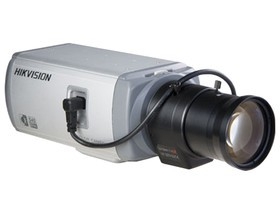How to plan monitoring points for large-scale monitoring installation?
With the construction of Ping'an City across the country, video work services have played a pivotal role in maintaining urban security. However, in reality, some video monitoring points have problems such as lack of systematic planning and scientific design, so how to select monitoring points more accurately? And on video camera What should be paid attention to when selecting and installing the type of?
Planning of monitoring points
According to the characteristics of key areas and the existing monitoring points, the planning idea of "enclosure, compensation, company and integration" is proposed according to the actual combat needs:
Circumference:
As the name implies, it is to enclose the target area to form a closed circle. The first is to control all intersections entering and exiting the city, the second is to control all entrances and exits in the main urban area, and the third is to control the entrances and exits in local areas to ensure 100% effective coverage of the main entrances and exits, so that any person, vehicle, object, etc. entering and exiting can obtain a clear image; Strive for effective coverage of all access parts.
Company:
Control all key parts, key places, and entrances and exits around key parts, and combine the distribution of peripheral cameras to form lines and circles according to the main roads in the urban area to form multiple interrelated closed circles, so as to ensure that moving targets can be captured multiple times.
Supplement:
Complementary points for all kinds of closed loops: ensure that the target must be clearly covered when passing through each layer of closed loops, reasonably plan the overlapping and intersecting closed loops in each jurisdiction, and avoid repeated construction, missing construction and other situations.
Additional points in the closed circle: mainly in the closed circle of the police station, additional monitoring points shall be built for the classified key units, key places and key parts, especially for areas with high incidence of cases, and camera types shall be selected according to the actual situation.
Combined:
Integrate social resources, give play to the auxiliary role of social resources in public security prevention and control, especially make full use of the video resources at the entrances and exits of closed key units, and form a powerful supplement to the closed circles at all levels.

Some installation principles
1. Selection of pole position considering environmental factors
(1) In principle, the distance between the pole point and the pole point shall not be less than 300m.
(2) In principle, the distance between the position of the pole and the monitoring target area shall not be less than 5 meters, and the distance shall not be more than 50 meters, so as to ensure that the monitoring image can contain more valuable information.
(3) Where there are light sources nearby, the use of light sources is preferred. However, it should be noted that the installation position of the camera should be in the light direction.
(4) Try to avoid installation in places with high contrast. If installation is necessary, consider:
① Turn on exposure compensation (the effect is not obvious);
② Use fill light;
③ Set the camera of the underpass outside the entrance and exit;
④ Set it in the middle of the channel.
(5) The pole position shall be kept away from green trees or other obstructions as far as possible. If it is necessary to install the pole, it shall be kept away from trees or other obstructions and leave space for the future growth of trees.
(6) During the survey, attention should be paid to obtaining power from traffic police annunciators, street lamp distribution boxes, governments, large enterprises and institutions (such as government departments, bus companies, water supply groups, hospitals, etc.) as far as possible to facilitate coordination and improve the stability of power consumption. Try to avoid power supply for small commercial users, especially for civil use.
(7) For the gun mounted on one side of the road, attention should be paid to the reverse photography of the facial features of pedestrians and pedestrians coming and going in the non motorized lane.
(8) The camera installed at the bus stop should be arranged at the rear of the bus as far as possible, avoiding the headlights of the vehicle, so as to capture the passengers.
2. Selection of upright pole for different cameras
Reasonably select rods to avoid cameras being blocked in the selection of social security monitoring rods. According to different camera types, it is better to select the height of manuscripts that meet the monitoring effect as much as possible: the height between 3.5-5.5m can be used as the selected height.
(1) Selection of gun camera rod height
For the selection of gun camera pole, try to select the pole type with relatively low height, usually the pole with height between 3.5-4.5m.
(2) Selection of rod height of spherical camera.
The spherical camera can rotate 360 degrees, and the focal length is adjustable. All spherical cameras should choose the highest possible rod. Generally, we choose the rod type between 4.5-5.5m. For the above bars of various heights, the reasonable cross arm length should be selected according to the distance between the pole position and the monitoring target position and the viewing direction to avoid the cross arm being too short to shoot the appropriate monitoring content. In the sheltered environment, it is better to select 1m or 2m cross arm to reduce the sheltering.
Selection of camera types
The basic principle for the selection of surveillance cameras should be to meet the actual business application as the goal, and to scientifically and reasonably select camera types in combination with the specific conditions of the monitoring site and the target range.
(1) High definition cameras should be used in high incidence places, public complex places, key sensitive areas prone to mass incidents, main road sections, crowded areas and important security targets;
(2) At the monitoring points such as key parts, around key units, parks, squares, scenic spots and traffic sections, if it is necessary to monitor a large area and the overall scene, and also need to identify the facial features of personnel, vehicle license plates and local scene conditions through lens zoom and PTZ control, high-speed fast ball cameras or PTZ guns should be used;
(3) In areas such as back streets and alleys, deviated road sections, and public security blind areas, there are few people and vehicles passing by, and there are many parts and angles that need to be monitored at the same time. Therefore, intelligent fast ball cameras with preset point cruise, pattern scanning and other functions should be used;
(4) For monitoring points with poor nighttime ambient lighting conditions and unsuitable for incandescent light compensation, infrared cameras or star level cameras should be used.
![]()






